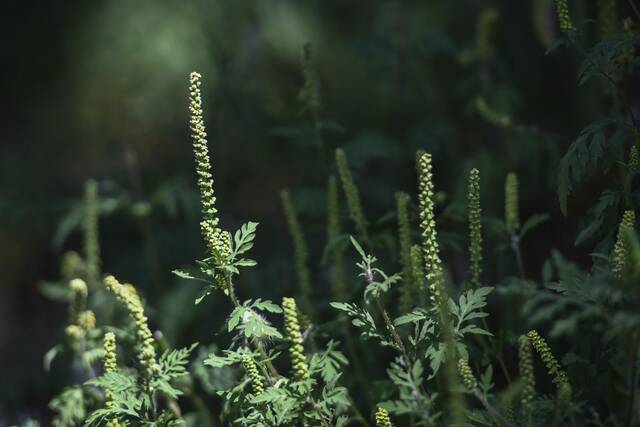Ragweed near full bloom in Western Pa. as fall approaches
Blessings to each and every one with allergies.
And tissues.
And nasal spray.
And eye drops.
And neti pots.
And Claritin or Zyrtec or Allegra.
Or if sleep is desired, Benadryl.
“‘Tis the season,” said Dr. Thomas Mertz of Allergy and Asthma Associates of Pittsburgh, a practice based in Harmar.
“It’s definitely ripe to be a bad season,” Mertz said, describing the ragweed crop, which peaks in September.
Ragweed pollen is small and when it’s inhaled, it’s inflammatory, which prompts sneezing and watery eyes.
Add in the Pittsburgh region’s poor air quality because of industrial and automotive pollution and it can make for some miserable moments, Mertz said.
Diesel exhaust can bind to the pollen, which makes the plants grow more as well, he said.
Ragweed’s the predominant allergen in the fall, peaking in September, but it’s joined by pig weed and Russian thistle among autumn allergens.
They usurp grasses, which are the summer irritant, and pollen from trees waking up after a winter’s slumber in spring, Mertz said.
For seasonal allergies, tree pollen usually shows up in spring, grass pollen in summer and weed pollen in late summer into fall. Weed pollen lasts through the first heavy frost.
There’s no sure-fire way to avoid allergies except to avoid going outside.
Mertz advises people to find an antihistamine that works for them. Several options abound and sometimes it also helps to switch which brand used, he said.
Consulting someone like Mertz is also an option, according to the Cleveland Clinic.
“They can find a treatment that can get you outside and enjoying the outdoors again,” the renowned provider notes on its website.
Those suffering from allergies may also find solace in knowing they aren’t alone: nearly 50 million people — about 15% of the U.S. population — say they suffer from seasonal allergies, according to the Asthma and Allergy Foundation of America.
For those who don’t trust their nose, pollen.com provides forecasts for the country. On Tuesday, 41% of the country was in medium-high status. The Pittsburgh region was high on Tuesday, with a slight respite on Wednesday then a surge in allergens on Friday.
Tom Davidson is a TribLive news editor. He has been a journalist in Western Pennsylvania for more than 25 years. He can be reached at tdavidson@triblive.com.
Remove the ads from your TribLIVE reading experience but still support the journalists who create the content with TribLIVE Ad-Free.

